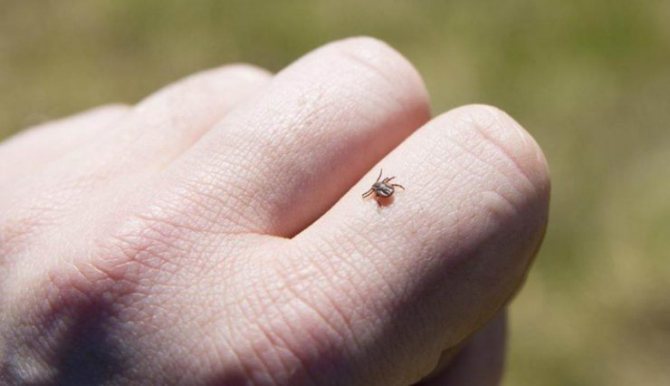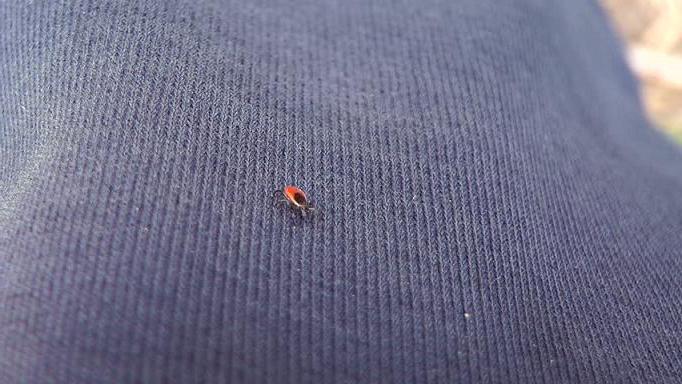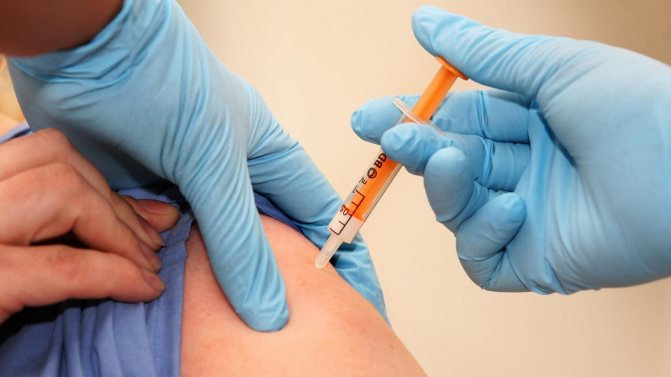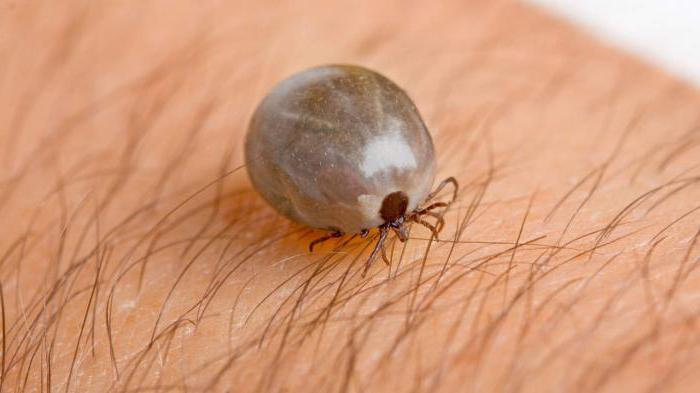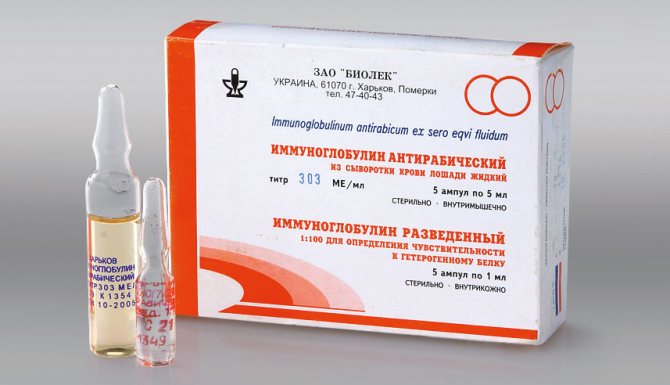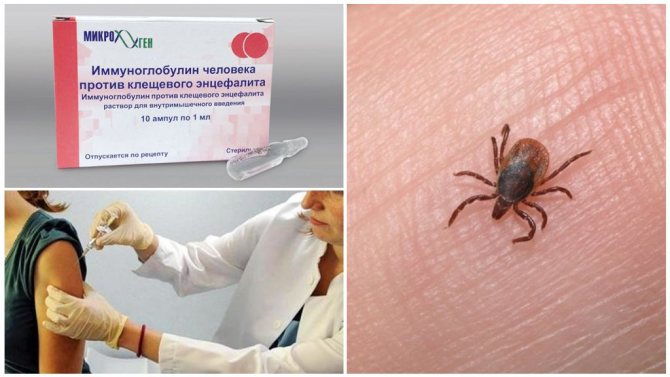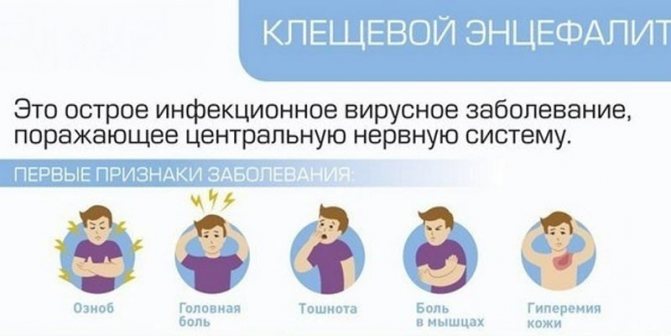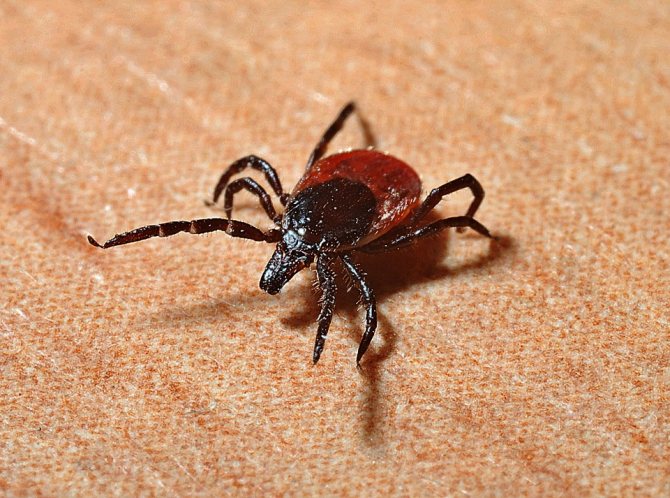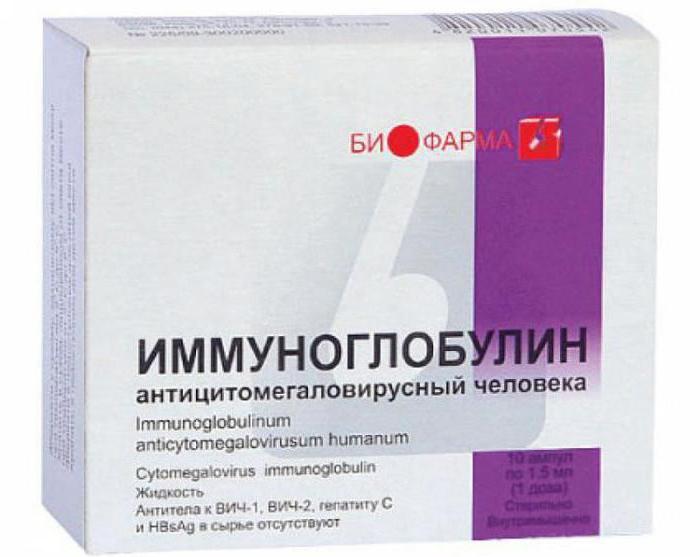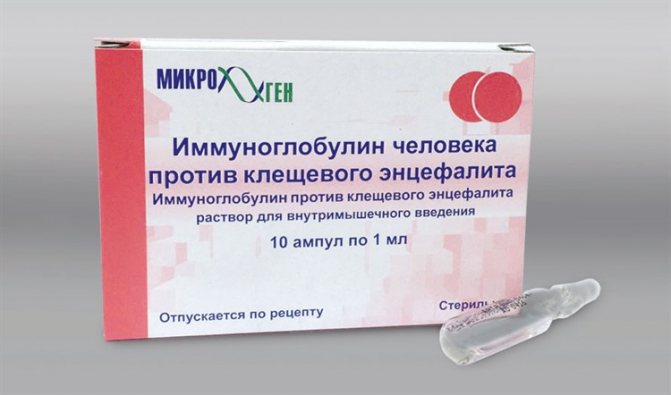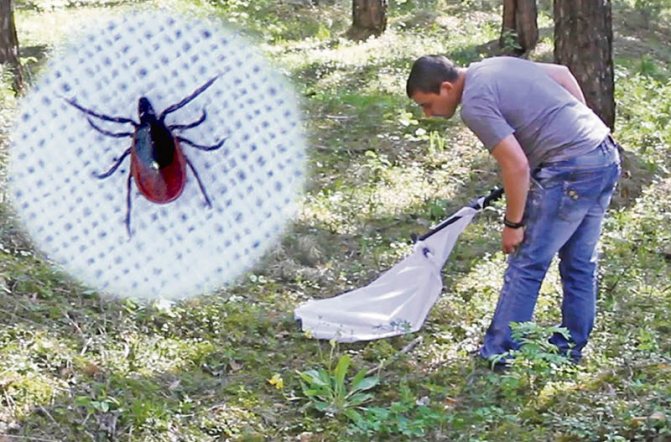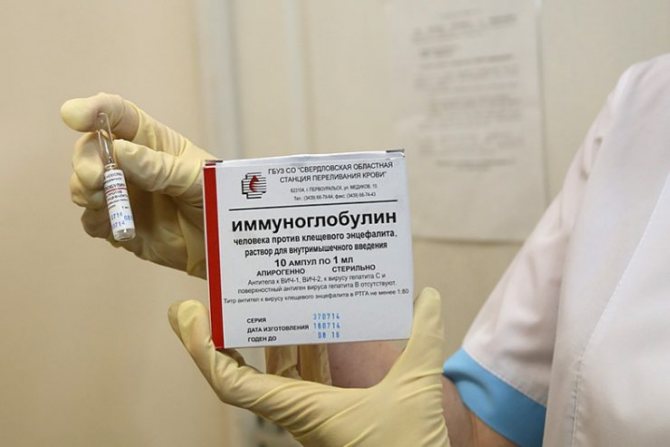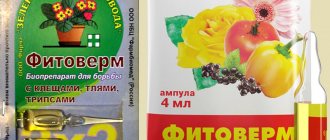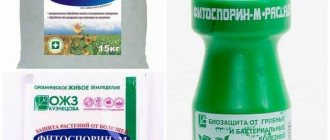Tick-borne encephalitis is an acute focal viral disease. It is a type of meningitis. It affects the gray matter of cerebral structures, brain cells. Causes severe neurological disorders, when the brain stem is involved in the process, it is almost 95% lethal. Treatment is carried out in stationary conditions under the constant supervision of doctors. Mortality even with full adherence to the rules of therapy is 30% or more, depending on the region.
More information about this disease can be found in our separate article.
Since the pathological process is of viral origin, the only treatment is to stimulate the body's own defenses with the help of immunomodulators, as well as the introduction of interferon. Are there any auxiliary ways? There is.
Patients are injected with human immunoglobulin against tick-borne encephalitis. By their nature, these are purified fractions of specific proteins of classes M and G, which ensure the binding of viral particles and their destruction. The effectiveness varies from 70 to 90%. Clinical trials show that even with incomplete action of immunoglobulin, tick-borne encephalitis occurs in patients in a mild form, without neurological complications.
The drug was widely used only in the countries of the former Soviet Union.
Composition and form of release
The Latin name of the drug is Immunoglobulinum humanum contra encephalitidem ixodicum fluidum. The medicine is a liquid - transparent or slightly opalescent. It either has a faint yellowish tint, or is completely colorless. When stored in ampoules with this liquid, a precipitate may form. The instructions say that the product must be shaken before use. There are no antibiotics and preservatives in the preparation. Its composition includes other components:
| Component group | Name |
| Basic substance | Protein fraction containing antibodies of class G (IgG) to tick-borne encephalitis virus. The active ingredient is contained in a concentration of 100 mg / ml. It is obtained from donor serum or plasma tested for antibodies to hepatitis C, HIV and Australian antigen. |
| Subsidiary |
|
Interaction with other drugs
Immunoglobulin (Ig) is allowed to be used in parallel with other medications, if they are not mixed, i.e. the next injection is given 5-30 minutes later in another area of the body.
Anti-mite Ig reduces the efficiency of the "live" viral vaccines, therefore, after the last injection of immunoglobulin with such drugs, it is required to wait 1-3 months.
Vaccines incompatible with tick bite immunoglobulin intake:
- from measles;
- from mumps (mumps);
- from chickenpox;
- from rubella.
If the patient has recently received an Ig injection, then it will also be necessary to maintain an interval of at least 4 weeks before the planned vaccination against encephalitis.
Pharmacological properties
Class G immunoglobulins present in the preparation have the activity of antibodies that bind the tick-borne encephalitis virus. The effects of using such a medication:
- The action of the anti-mite immunoglobulin is to interrupt the life cycle of the virus even at the moment when it enters the bloodstream. As a result, the pathogen cannot multiply. IgG immunoglobulins detect the virus, bind it and remove it from the body.
- Additionally, the drug has an immunostimulating effect. Immunoglobulin with a tick bite enhances the body's nonspecific resistance, that is, immunity.
Only 1 ml of this drug binds 600-60,000 doses of the virus, which are fatal to humans. The maximum concentration of anti-mite immunoglobulin in the blood is detected 24-48 hours after its administration to the patient. The half-life is 4-5 weeks.

- Buckwheat diet with kefir - menu for 7 days. Reviews of those who have lost weight and the results of the buckwheat diet with a photo
- Funchose salad: recipes
- Olivier salad recipes
Do I need to get vaccinated after a tick bite?
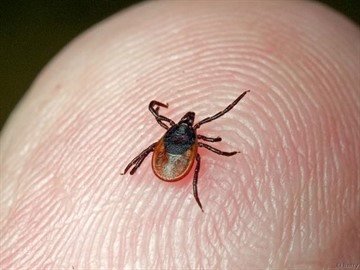

It is impossible to determine by eye which tick bit you - infectious or not. Therefore, there is always the possibility of infection with the most severe pathology - encephalitis.
If treatment is not started on time, a person runs the risk of being disabled or even dying. But do not despair, because each of us has an immune system that can suppress even such serious diseases as tick-borne encephalitis (TBE). But it happens that the strength of the immune system is not enough, which means that it needs help. And this is where immunoglobulins (or antibodies) come to the rescue.
What it is? Immunoglobulins are special protein compounds (in the blood plasma) that are induced by the body instantly, as soon as there is an "invasion" of viruses, in this case encephalitis. The human body produces several types of antibodies at once.
All of them differ in characteristics and chemical composition, but have a single purpose - to identify and destroy pathogenic microorganisms. When a tick bites, many viruses enter the body, and natural immunity cannot always overcome them, which means that a person gets sick.
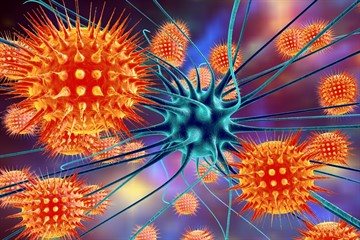

To prevent this from happening, you can use drug antibodies - Immunoglobulin (IG). But is it always necessary to inject it with a tick bite? The immunological criterion is difficult to determine.
Indeed, doctors often use immunoglobulins in their practice. It is a proven therapy for many diseases. But in the case of tick bites, not everything is clear.
The virus inside the tick does not necessarily enter the person, that is, it is possible not to get sick with encephalitis. Nevertheless, the class G antibodies included in the preparation actively destroy TBE viruses. Therefore, getting an injection is a smart move.
When a tick bites, doctors advise to remove it as soon as possible.... It is better to do this with tweezers, for which you need to gently grab the arthropod (closer to the skin) and try to remove the head and proboscis.
The abdomen must not be squeezed. After removing the tick, wash your hands and treat the affected area with an antiseptic. If the wound is "calm", there is no redness or swelling, then there is no need to go to the hospital right away.
If the site of the bite turns red, the temperature rises, pain appears in the muscles, urgent medical attention is needed.
Indications for use
According to the instructions, the main area of application of this medication is the fight against tick-borne encephalitis. The drug can be used both for emergency treatment of this disease and for its prevention. Conditions for prescribing anti-mite immunoglobulin injections:
- the person who was bitten was not vaccinated or did not have time to undergo a course of vaccination;
- analysis confirmed that the tick is a carrier of encephalitis;
- traces of massive tick bites were found on the human body, even when vaccinated;
- living in endemic areas without formed immunity.
If there is a tick vaccine, is human immunoglobulin given?


In our country, the practice of administering immunoglobulin to people who have not been previously vaccinated. This is done in order to protect a person from possible infection.
So, if the patient has not previously been vaccinated or has not completed a full course of immunization, an injection of immunoglobulin is indicated for him. Important: the injection must be delivered in the first 3-4 days!If a person has already been vaccinated against TBE, but was repeatedly bitten by ticks, then it is also necessary to introduce IG.
The fact is that the existing immunity may not cope with a large number of pathogenic viruses. If a person took IG, but was bitten by ticks (one or more), then the drug should be injected again, but no later than 30 days from the day of the 1st injection of the drug.
The difference between vaccination and immunoglobulin should be understood. In the first case, the body begins to build immune defense against the introduced pathogen (cell walls of the TBE virus), which is approximately reminiscent of the natural formation of immunity. Vaccination against TBE is not a quick process, but protection lasts for many years.


In the case of immunoglobulin, a person receives a one-time huge dose of protective antibodies in order to destroy the virus immediately. And if he has no immunity, then the drug helps to block pathogens.
Protection is guaranteed for a month. That is, IG has nothing to do with the formation of immunity and is called "substitution therapy". Will immunoglobulin injections save you from contracting encephalitis? IG vaccination cannot guarantee protection against EC infection or other diseases.
It only helps the immune system fight this virus.
Immunoglobulin significantly reduces the risk of developing EC, but does not completely eliminate it.
Method of administration and dosage
The contents of the ampoules are intended for intramuscular injection into the outer surface of the thigh or the upper extreme quadrant of the right or left gluteus muscle. When opening them, they strictly adhere to the rules of antiseptics. The frequency of application and the dose of anti-mite immunoglobulin depend on the indications. Instructions for use for prevention:
- The dose is calculated at the rate of 0.1 ml per 1 kg of body weight.
- For prophylaxis, the drug is administered no later than 4 days after the bite.
If a person has been identified with several bites or infection of a sucked tick, then such a patient is at a high risk of infection. In this case, the anti-mite immunoglobulin is administered once to those who are not vaccinated. The drug protects a person for 4 weeks. As stated in the instructions, after an encephalitis tick bite, the medicine should be administered as early as possible. The best option is immediately after the first signs of the disease appear. Immunoglobulin against tick-borne encephalitis is used according to different schemes:
| Encephalitis form | Dosage according to instructions | Duration of use |
| Erased and abortive (febrile forms of infection) | 0.1 ml / kg body weight | The course of treatment lasts 3-5 days until the symptoms of infection regress. Heading dose - not less than 21 ml. |
| Meningeal | 0.1 ml / kg body weight 2 times a day after 10-12 hours | Therapy lasts at least 5 days until the condition improves. The dose for the entire course is at least 70 ml. |
| Focal | 0.1 ml / kg body weight 2-3 times a day after 8-12 hours (if necessary, the dose can be increased to 0.15 ml / kg body weight) | 5-6 days before the temperature returns to normal and the neurological symptoms are eliminated. For an adult, the average course dose is 80-130 ml of anti-mite immunoglobulin. |
- How to weave macrame
- How to quickly grow fingernails at home
- What is spelled
Is serum for tick-borne encephalitis administered free of charge, according to the compulsory medical insurance policy?
Where can I get free medical care? According to the current legislation, according to the compulsory medical insurance policy, the victim is obliged to provide first aid free of charge after an insect bite in any state medical institution (at the place of residence or actual location). However, not all so simple.
The tick will be removed for free in the clinic and the bitten area will be treated, but the immunoglobulin will not be injected immediately. Medication injections are made only after examining the insect, for which the patient will have to pay from his wallet.Analyzes will cost 1000-1500 rubles.
Only after confirming the presence of the pathogen of the virus, the victim will be entitled to free therapy. It is very important that the research results arrive on time.
Many insurance companies offer additional packages that include everything from insect extraction to drug injections and, if necessary, further treatment and rehabilitation. The cost of an additional policy is 200-400 rubles. This is nothing compared to the cost of the entire treatment. It makes sense to purchase such a policy if a person is really at risk of suffering from ticks.
special instructions
According to the instructions, the dose of anti-mite immunoglobulin must be distributed over several parts of the body. This will help to avoid the development of side effects in the form of pronounced local reactions. After the injection, the patient should be observed for half an hour by a specialist who has access to anti-shock drugs. Human immunoglobulin against tick-borne encephalitis does not in any way affect the ability to concentrate and drive vehicles.
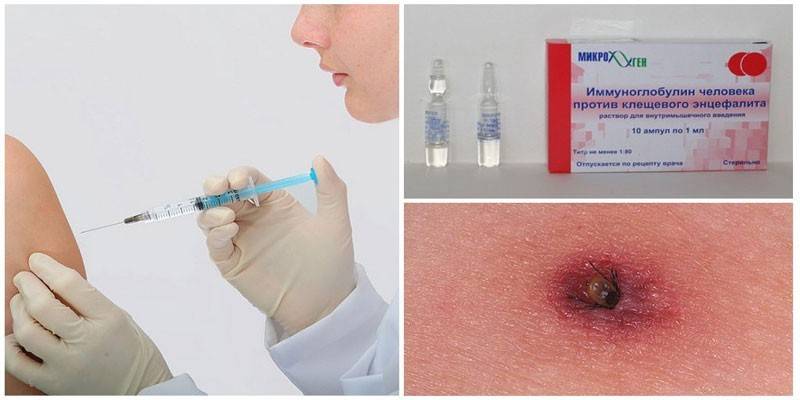

Side effects
Adverse events in most cases are insignificant:
- Local allergic reaction: itching, rashes, discomfort, dryness of the dermal layer.
- Pain syndrome. Unpleasant sensations at the injection site. Swelling, redness of the area. The side effect disappears without a trace after 3-24 hours. Subject to all the rules for the introduction of funds.
- An increase in body temperature to subfebrile levels. Maximum 37.5 degrees. It lasts about a day. It is safe, indicates the activity of the proteins.
- Anaphylactic shock. Immune emergency.
Of the entire list, local tissue irritation occurs most often. The manifestation has no clinical significance. In Russian studies, the frequency of adverse events is higher. Side effects go away on their own.
Respiratory disorders. Shortness of breath, then choking. Indicates edema of the lower airways. It is often the result of developing anaphylactic shock.
An increase in body temperature to over 38 degrees, long-term preservation of hyperthermia. There may be a lack of clinical effect and aggravation of viral lesions.
Pain syndrome at the injection site. Formation of dense formation, infiltration. Severe biting pain after injection, redness, burning. Signs of suppuration. Infection of the wound is possible. It is relatively rare.
Consciousness disturbances. By the type of fainting, syncope. Weakness, drowsiness, impaired performance, mnestic, cognitive functions.
Therefore, it is recommended to undergo preventive or therapeutic measures in a hospital setting. In the absence of such an opportunity, carefully observe the state of health.
Contraindications
Since immunoglobulin is a compound of the protein fraction, it can cause severe allergies. As a result, the body can perceive it as a foreign substance. In case of protein intolerance, anti-mite encephalitis is not used. For allergic diseases, anti-mite immunoglobulin is administered only against the background of antihistamine therapy. Such pathologies include:
- bronchial asthma;
- serious allergic reactions to blood products given by injection;
- recurrent urticaria;
- atopic dermatitis;
- severe reactions to medicinal, food and other allergens.


Vaccine feasibility
The calendar of mandatory immunoglobulin vaccinations against tick-borne encephalitis is not. This is not a mandatory vaccine, but an emergency aid.
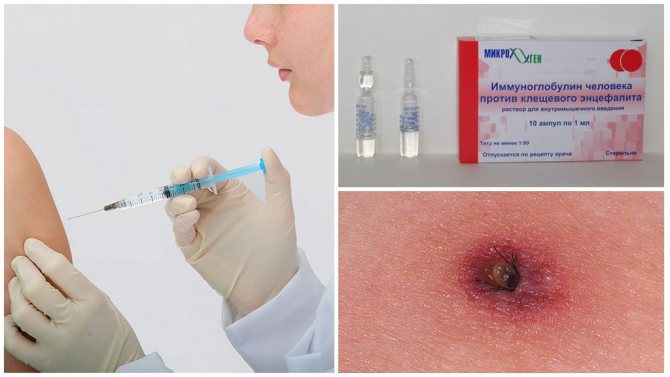

Tick-borne encephalitis immunoglobulin
It is advisable to give an injection to residents of dangerous regions where cases of the disease are recorded from year to year. One high-quality vaccine is valid for no more than 1.5 months, so 2 vaccinations may be needed in one season.It is worth injecting immunoglobulin even before the tick bites, since you may not even notice this moment, the disease will begin to slowly develop. After 14-30 days, it will make itself felt with an acute onset.
Important information
You can get vaccinated against tick-borne encephalitis in a public clinic, private institutions. The list for Moscow and other cities of the country can be found on the Internet. Contact information is also provided there.
Every season, on the basis of state clinics, educational institutions, SES, there are special vaccination rooms where you can get an injection for free. Children from 3 years of age, adults are vaccinated with the domestic vaccine. Austrian immunoglobulin has an age limit of 1 year.
Prophylactic vaccination should be done 1-1.5 months before the tick activity season, visiting a dangerous region. A year later, another vaccine is given, then every 3 years.
An injection of immunoglobulin from a tick costs differently in private clinics, the average price for one vaccination is 1500 rubles. The cost of a paid injection also depends on the manufacturer of the vaccine - a domestic company, Austria. You can buy the drug yourself via the Internet. A package with 5 ampoules - one dose for an adult, costs 3078 rubles.
The effectiveness of the drug depends on the individual characteristics of the organism, the correctness of the procedures. If the dose is exceeded, immunoglobulin is harmful; if an insufficient amount of the drug is administered, the protection may not work. The question whether immunoglobulin helps against tick-borne encephalitis can be answered unequivocally - yes. However, no vaccine gives 100% protection against the disease. Vaccinated people tolerate the disease more easily without complications.
Our specialists
Vladimir Vladimirovich Kvasovka
Deputy General Director for Medical Affairs, General Practitioner, Gastroenterologist, Candidate of Medical Sciences
To make an appointment
Ilya Andreevich Gudkov
Anesthesiologist-resuscitator, cardiologist, functional diagnostics doctor
To make an appointment
Natalia Sergeevna Vidyaeva
Endoscopist
To make an appointment


